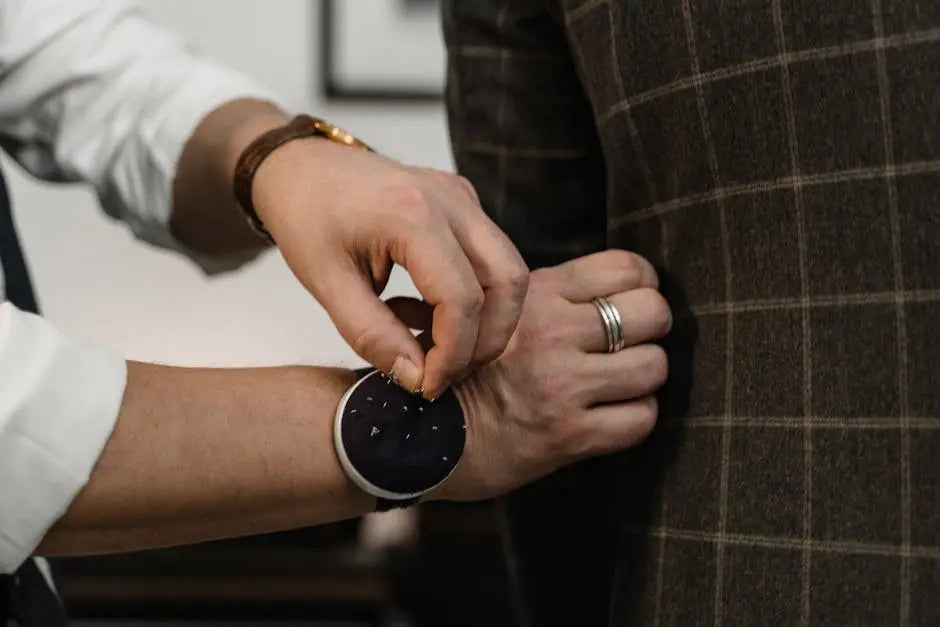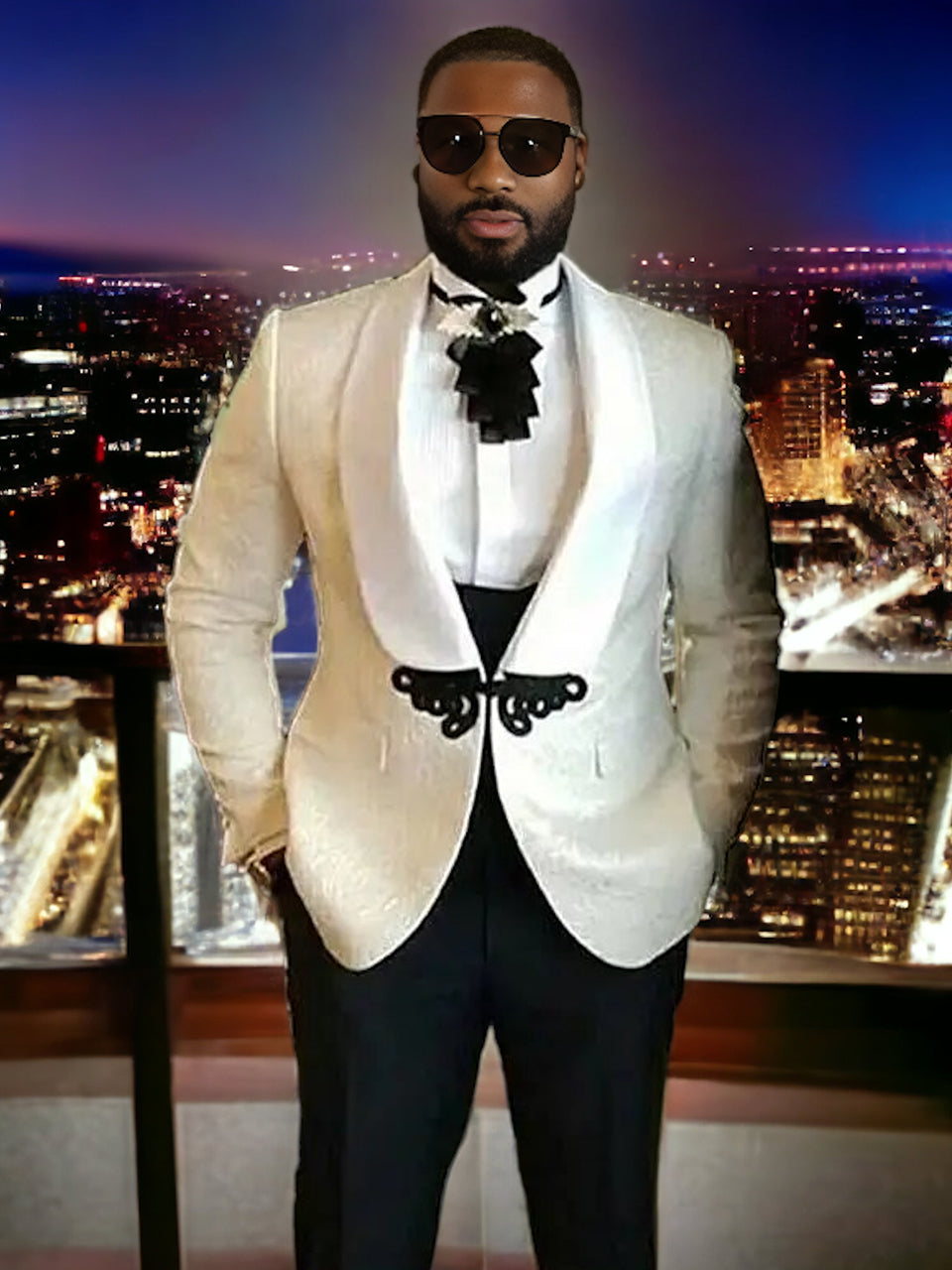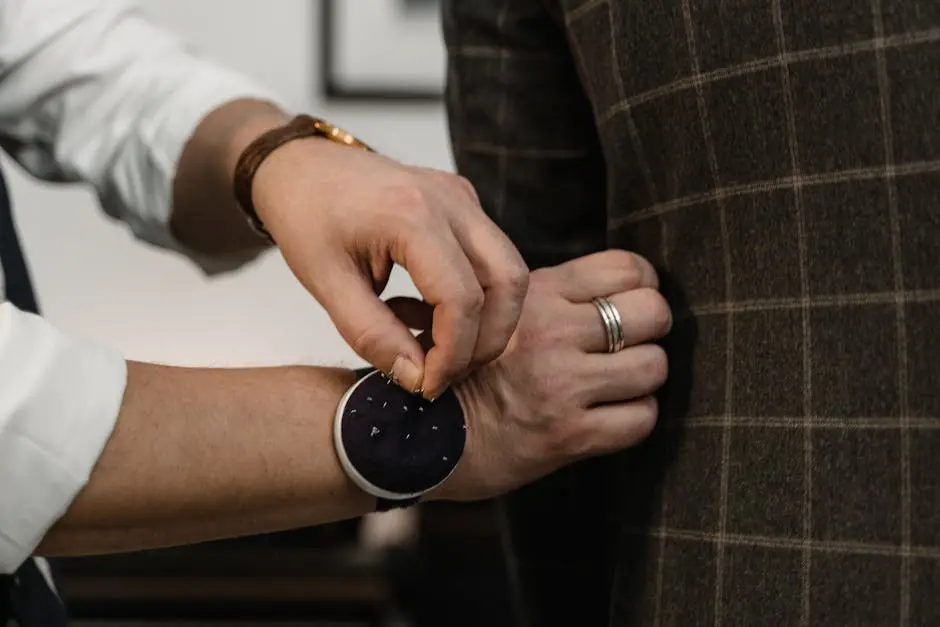Mastering the Art of Suit Fitting: A Style Guide

Suit fitting can make or break your overall look. Whether you’re preparing for a wedding, a job interview, or a special event, understanding how to achieve the perfect fit is essential. This guide will walk you through the key elements of suit fitting, ensuring you look and feel your best.
Understanding Suit Types and Their Fit
The perfect suit fit starts with understanding the different types of suits available. From the classic two-piece to the sophisticated three-piece or the newly trendy casual suits, each style possesses unique characteristics that affect the fit. A tailored suit enhances your appearance, while an ill-fitting one can detract from your best features. Knowing what each type looks like and how it should fit allows you to make a more informed decision.
For instance, a single-breasted suit jacket should sit comfortably on your shoulders, without being overly tight or loose. On the other hand, double-breasted suits require a bit more attention, as they often have a more structured silhouette. The key is to find a suit type that complements your body shape while still catering to your personal style.
Different suit styles may also vary by occasion. Formal events may call for a more traditional cut, while modern workplaces might embrace relaxed styles. Understanding how suit types fit into these contexts can help you select the best option that aligns with both your needs and your style.
Key Measurements for a Perfect Fit
When it comes to achieving a perfect fit, knowing your measurements is crucial. This process involves five standard measurements: chest, waist, hips, inseam, and sleeve length. Each plays a pivotal role in determining how well your suit will fit your body. Start with a soft measuring tape to take your measurements, as this will yield the best results.
Your chest measurement will establish the foundation for your suit size. It’s the largest part of your torso and is vital for comfort and movement. Next, take your waist measurement, which should be at its natural waistline, just above your hips. This measurement ensures that the suit will fit snugly without being too tight.
Inseam is another critical measurement; by gauging the space from your crotch to your ankle, you ensure that your pants will land perfectly on your shoes. Finally, sleeve length is measured from the center of your neck to your wrist, allowing for a comfortable arm fit without excess fabric. With these key measurements in hand, you can confidently select a suit that fits your unique shape.
The Importance of Tailoring
Even if you find a suit that seems perfect off the rack, tailoring can make all the difference in achieving that custom look. A skilled tailor can adjust the fit to accommodate your personal dimensions, ensuring that every aspect, from the shoulders to the sleeves, suits you perfectly. Tailoring allows for specific adjustments like taking in the waist or shortening the sleeves, achieving a silhouette that’s both sharp and comfortable.
The value of tailoring comes down to this: a well-fitted suit transforms your appearance. It should highlight your shoulders, taper at your waist, and allow for easy movement. If your suit is a little off in any of these areas, you’re likely to feel uncomfortable, which can affect your confidence. Remember, a suit is an investment in your personal style and appearance, so taking the time to tailor it to your body is vital.
Additionally, tailoring can extend the life of your suit. By making minor modifications, you’ll ensure that it ages well alongside you, reducing the need for expensive replacements. Investing in tailoring is investing in yourself, showing that you appreciate quality and care about your look.
Fabric Matters: Choosing the Right Material
Width of fabric often seems unimportant in the grand scheme of suit fitting, yet it significantly influences the overall drape of your suit. Fabrics range from lightweight cotton to heavier wools. A breathable fabric is essential during warm seasons, while heavier materials work best for cooler weather. Taking your climate into account will help steer your fabric choices.
Moreover, the texture of fabric adds a distinct character to your suit. Smooth finishes often lend themselves to more formal occasions, whereas textured fabrics like tweed or linen can provide a casual flair. Investing time in understanding how different fabrics work will result in selecting a suit that not only fits well but also looks great.
Keep in mind that the weave of the fabric can affect its durability and the way it holds shape. For example, a high-twist fabric can maintain its structure for an extended period, which is ideal for formal suits worn frequently. In contrast, softer, less durable materials may require more maintenance and attention.
Common Suit Fitting Mistakes to Avoid
Suit fitting errors can tarnish your overall appearance. One common mistake people make is choosing the wrong suit size based on fit rather than measurements. It’s crucial to select your size based on how the suit sits on your body rather than the label. A suit that doesn’t fit your shoulders properly will only lead to awkward adjustments later.
Another frequent issue is the length of the sleeves and pants. People often opt for lengths that look good standing but fail to consider movement. Your sleeves should ideally show about a quarter to half an inch of your shirt cuff when your arms are at your sides. For pants, an ideal length typically grazes the tops of your shoes without gathering too much fabric at the ankles.
Moreover, not accounting for your body’s shape is another common mistake. Everyone has unique proportions and dimensions, and what looks good on one body type may not flatter another. Always avoid trends that don’t take personal style and fit into account. Choose suits that celebrate your unique shape rather than conform to fleeting fashion trends.
Styling Tips for a Tailored Look
Achieving that impeccably tailored look often comes down to small details. A beautifully fitted suit can be elevated with the right accessories. Consider incorporating a stylish tie, pocket square, or even a unique pair of cufflinks. These accents can add personality to your outfit while showcasing your individual style without overwhelming the clean lines of your suit.
The color palette you choose also matters. Classic colors such as navy, charcoal, or black offer versatility for any occasion. Introducing lighter colors or bold patterns can help express your personality, but it’s essential to balance these choices. Remember that a timeless look is often understated yet impactful.
Don’t overlook shoes, as they play a crucial part in completing your ensemble. The shoes you choose should complement your suit style. Oxfords and brogues often work best for formal settings, while loafers can highlight a more casual suit. Ensuring your footwear is polished and free from scuffs is essential for making a lasting impression.
Maintaining Your Suit for Long-Lasting Fit
To preserve the fit and appearance of your suit, maintenance is key. Start with proper storage methods; always use a sturdy hanger to maintain the broad shoulders and prevent drooping. Also, investing in a garment bag can protect it from dust and potential damages when not in use. Avoid cramming your suit into tight spaces, as doing so can warp its shape.
Regular dry cleaning is necessary to keep your suit looking sharp, but be mindful not to overdo it. Cleaning your suit too frequently can lead to the fabric wearing out prematurely. Instead, aim for a balance—clean your suit after a few wears if it picks up odors or stains but avoid cleaning it for lighter use.
Lastly, learn to understand fabric issues like pilling and fading. Regularly inspect your suit for signs of wear and treat any issues immediately to prolong its life. By putting in the effort to maintain your suit, you’ll ensure it remains a staple in your wardrobe for years to come.
Final Thoughts on Suit Fitting
By understanding the fundamental aspects of suit fitting, you’re equipped to choose the right fit for your body type and occasion. A well-fitted suit not only enhances your appearance but also boosts your confidence. Always remember, the perfect suit is a combination of style, comfort, and individuality.






